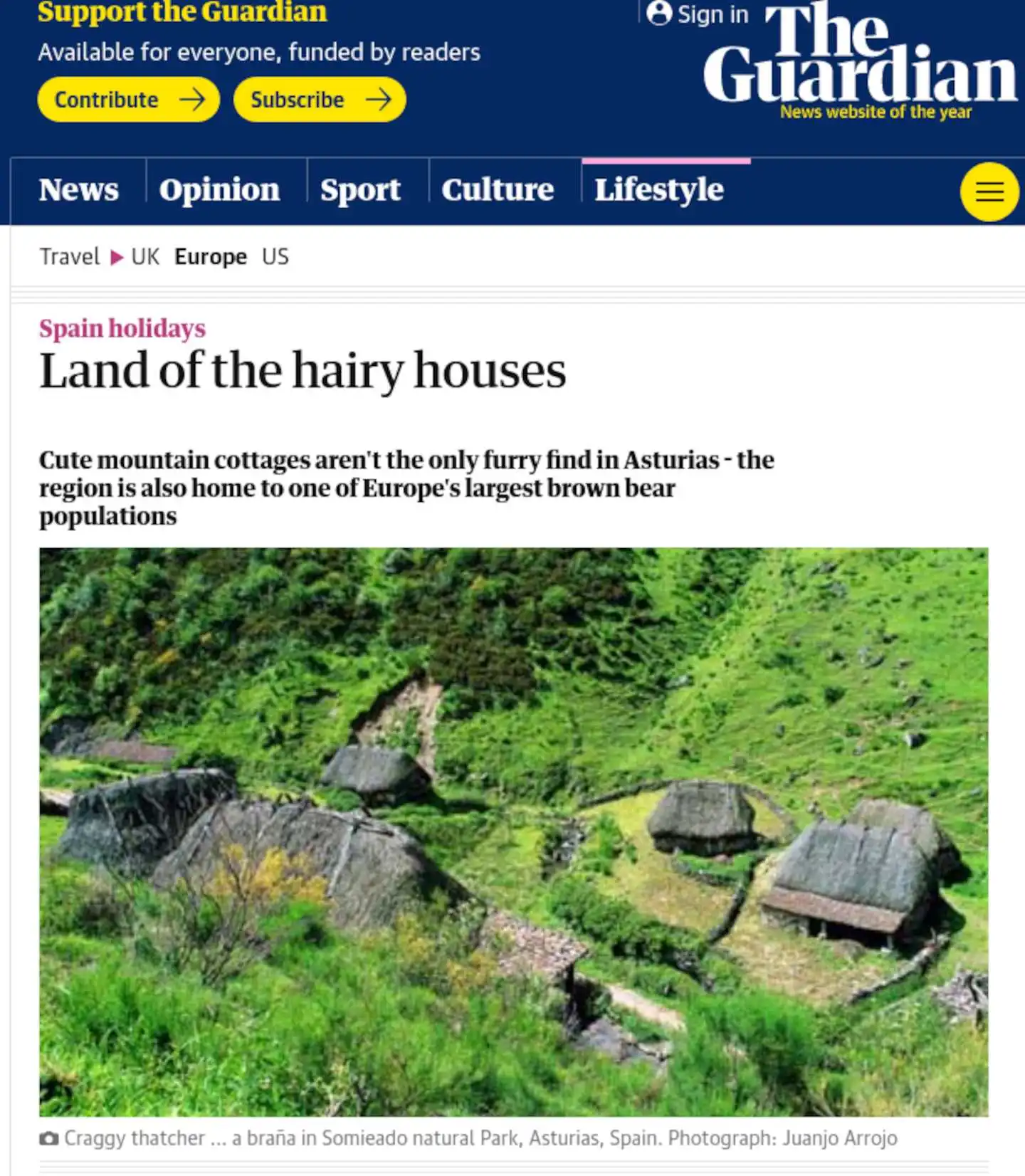Bajo este curioso título publicaba el diario británico The Guardian, ya en 2009, un extenso artículo poniendo el valor Somiedo como destino turístico en el que se puede disfrutar tanto de la naturaleza en plenitud como de la riqueza etnográfica del territorio.
El artículo comienza uniendo los "techos peludos" característicos de los teitos con el pelaje del oso pardo, ya que esta es una de las pocas zonas de Europa donde este animal vive en libertad.
Continúa el autor relatando su viaje familiar desde Inglaterra hasta el Camping Lagos de Somiedo, donde la pareja se alojó acompañada por su tres hijas pequeñas.
As we entered Somiedo's foothills of oak and birch forests in the Cantabrian mountains, a brief rebellion in the back was quelled by a large yellow road sign warning: "Attention Osos" (Caution Bears). This area is a refuge for one of Europe's largest surviving brown bear populations. For the rest of the journey the talk was all about bears: what they eat - and who they might eat.
No faltan en su relato referencias a los vaqueiros y su forma de vida tradicional, así como a las delicias de la cocina local.
Adolfo kindly offered to accompany us on our first walk - a bit of local knowledge is always nice in bear territory - and after a superb lunch of goat stew at the village restaurant, served beneath the head of a rather ferocious wild boar, we set off towards the lakes of Saliencia. As we walked, the snow-clad peaks of Peña de la Cueva and El Canto de la Almagrera looming above us, Adolfo explained how locals believed there was treasure on the lake bed, guarded by the water nymphs of Asturian mythology.


